Australian Garden History, the Society’s journal, was first published in 1989. It has continued as it started, striving to maintain a dialogue between professional and amateur interests in the history of gardens, thus showcasing the many aspects of the landscape and its intersection with Australian life.
Media Releases
March 2025 - Ways of seeing landscape
December 2024 - Garden transmissions
September 2024 - People and plants
July 2024 - Restoring and recording gardens
March 2024 - Lest we forget
December 2023 - Déjà vu: recurring themes in gardens and landscape history
September 2023 - Highlighting design
June 2023 - Celebrating camellias
March 2023 - From Gondwana to mid-20th century modern
January 2023 - The diverse histories of gardens
September 2022 - Knowing our landscape
June 2022 - Collating the past
March 2022 - The flow of ideas
6 January 2022 - Against the odds
20 September 2021 - Being seen to conserve
1 June 2021 - A picture is worth a thousand words
31 March 2021 - Dare to dream
5 January 2021 - Gardens are great
16 September 2020 - How gardens and landscape shape our identity
13 August 2020 - Gardens and their history offer solace during COVID-19
Indices of Journal Articles
The index to Australian Garden History makes it easy to find articles, gardens and other gems contained in volumes 1–20.
Compiled by AGHS member Kirstie McRobert, this comprehensive index covers issues of the Australian Garden History Journal from 1989-2009.
Download:
Australian Garden History Index, Volumes 1–20 — Australian Garden History Society.
For a limited search of online journal extracts, enter a word of interest here ...
Donate to the Nina Crone Writing Fund
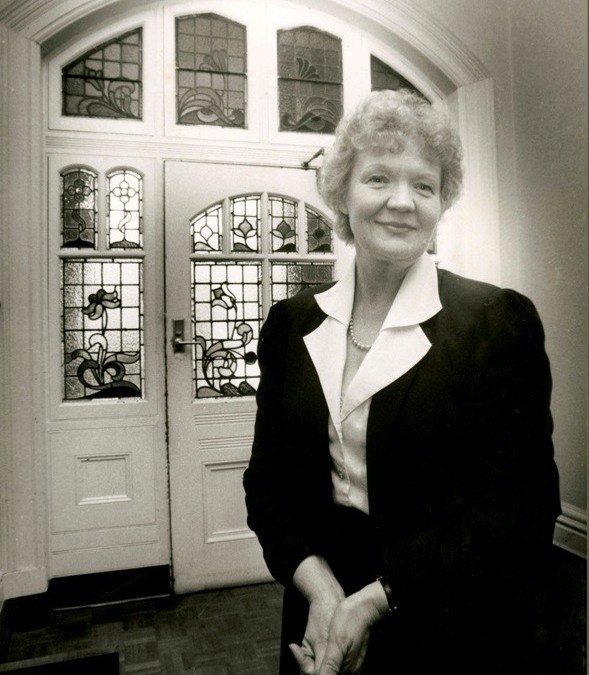 If you would like to encourage new writing talent and promote interest in garden history by donating to the Nina Crone Writing Fund, please click here for details.
If you would like to encourage new writing talent and promote interest in garden history by donating to the Nina Crone Writing Fund, please click here for details.
History of the Journal
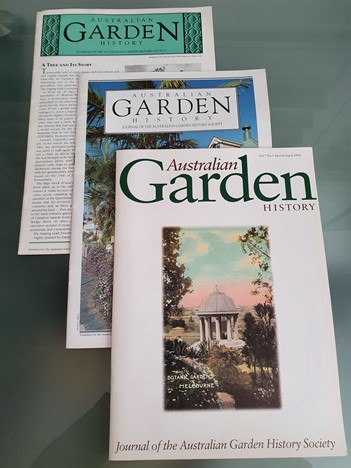 Nancy Clarke, AGHS ACT Monaro Riverina Branch, sets out the history of Australian Garden History in this paper,
Nancy Clarke, AGHS ACT Monaro Riverina Branch, sets out the history of Australian Garden History in this paper,
The Australian Garden History Society journals
Getting Published in the Journal
Guidelines for submission to Australian Garden History Journal
Copy deadlines for article submission to Australian Garden History Journal
| January issue | end of October |
|---|---|
| April issue | end of January |
| July issue | end of April |
| October issue | end of July |
Authors: please note that planning for future issues takes place well before these deadlines. You are advised to contact the editor as early as possible about your intention to submit.
Advertise in the Journal
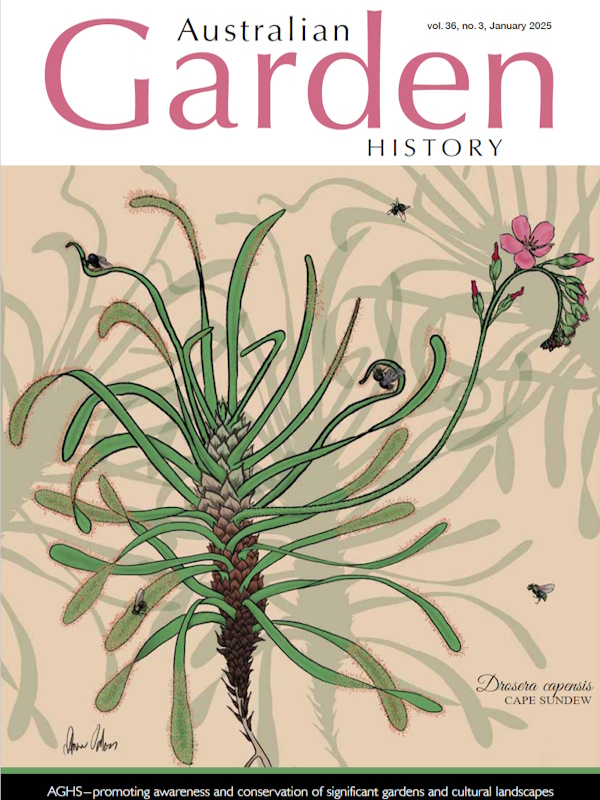
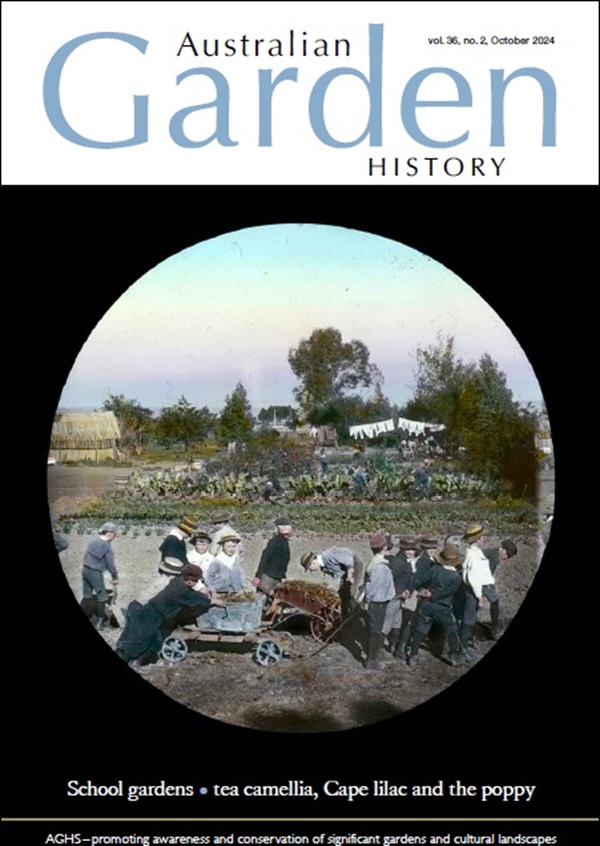
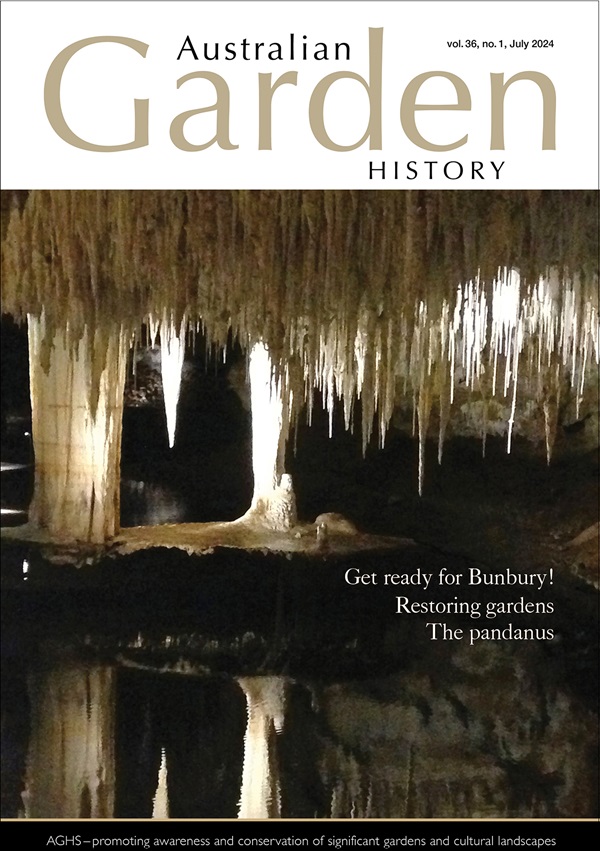
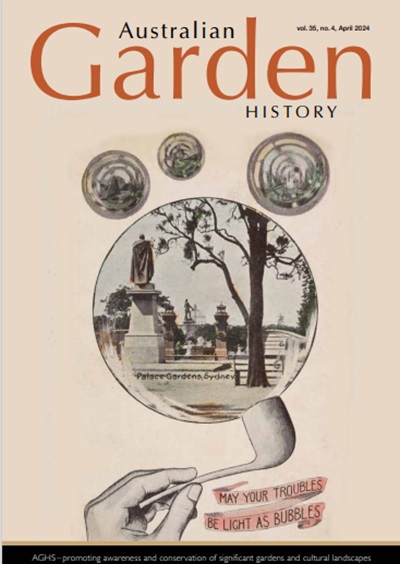
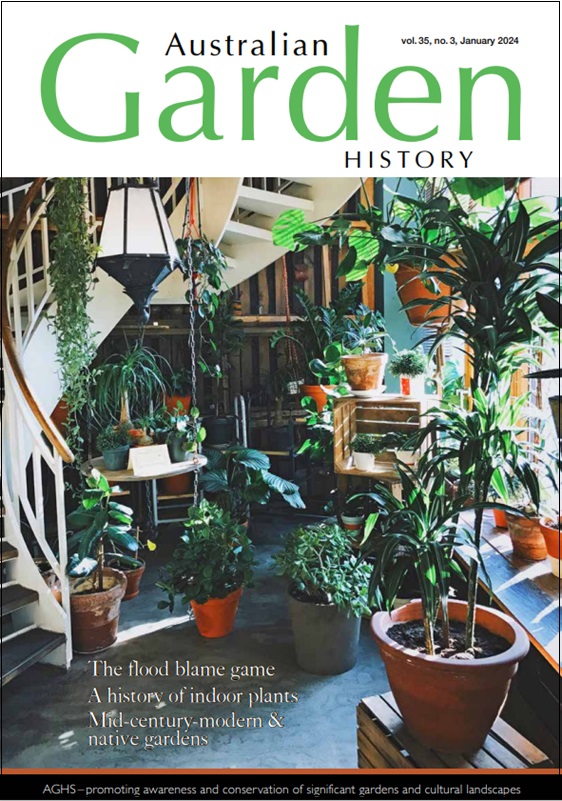
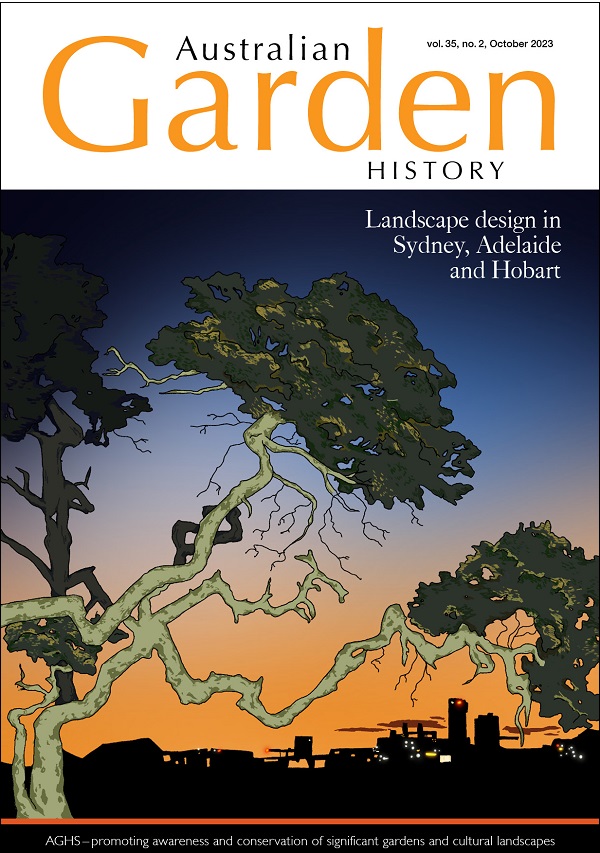
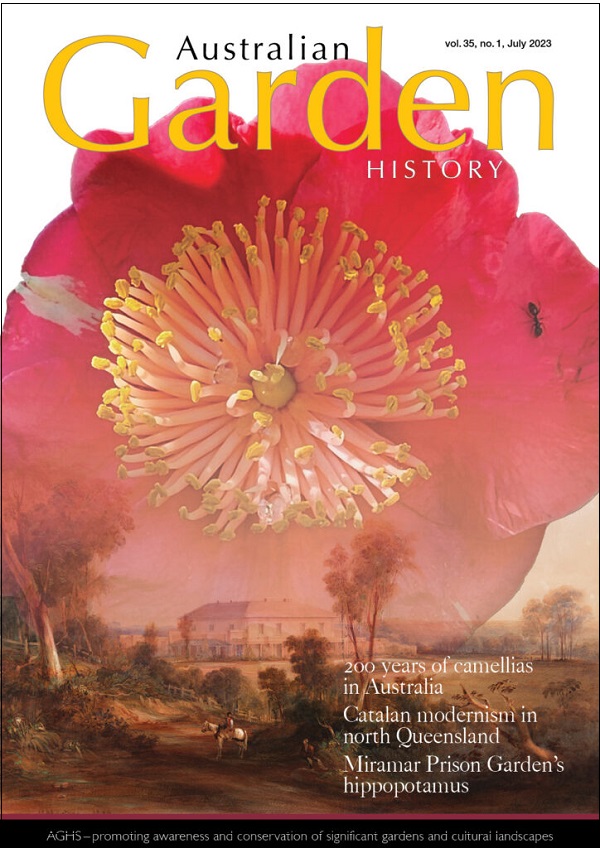
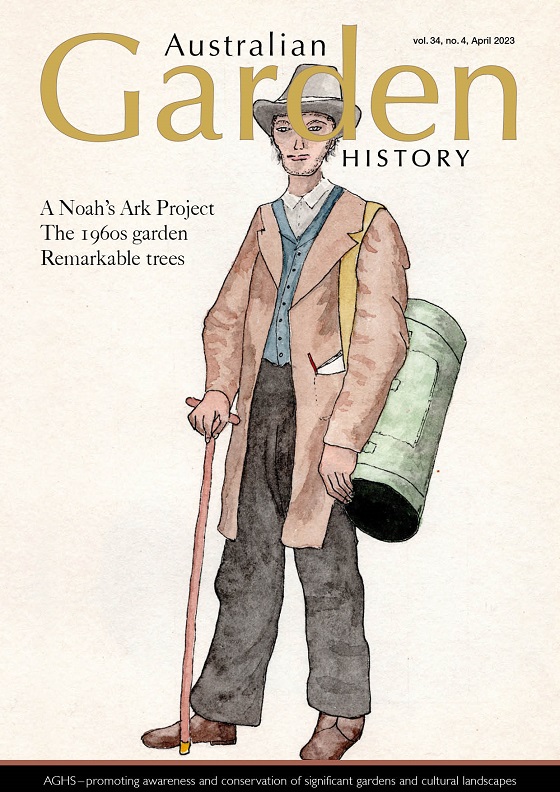
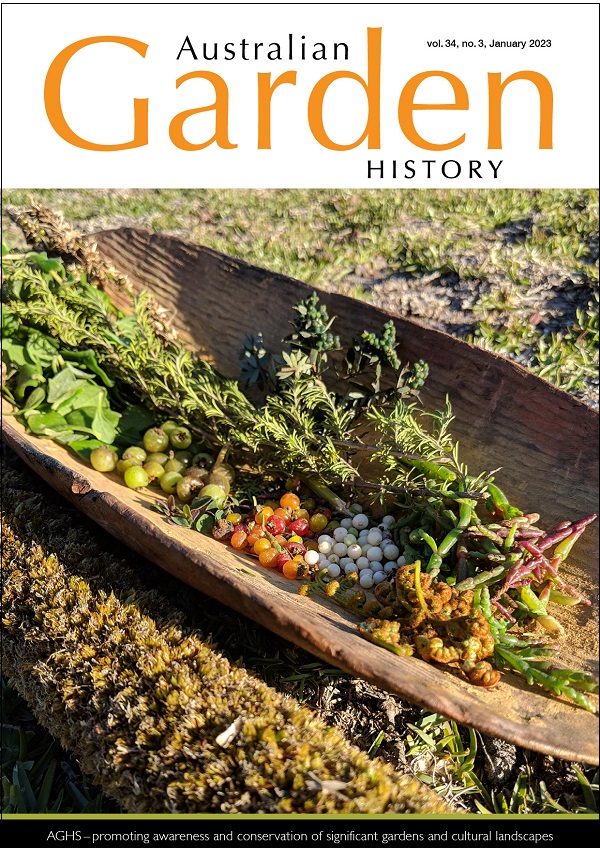
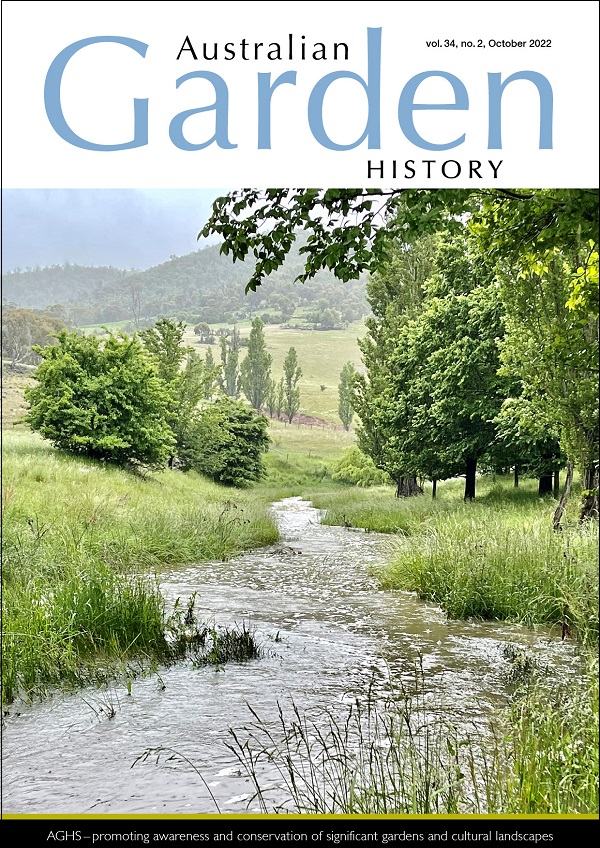
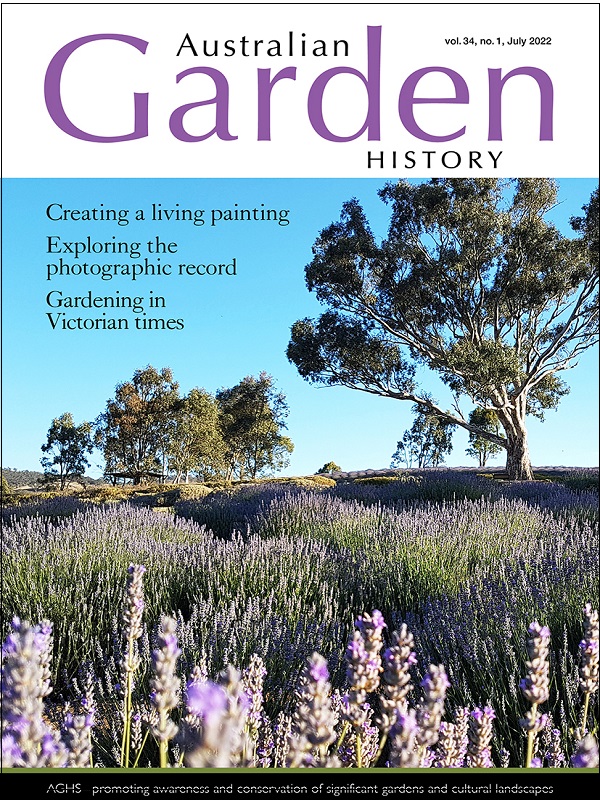
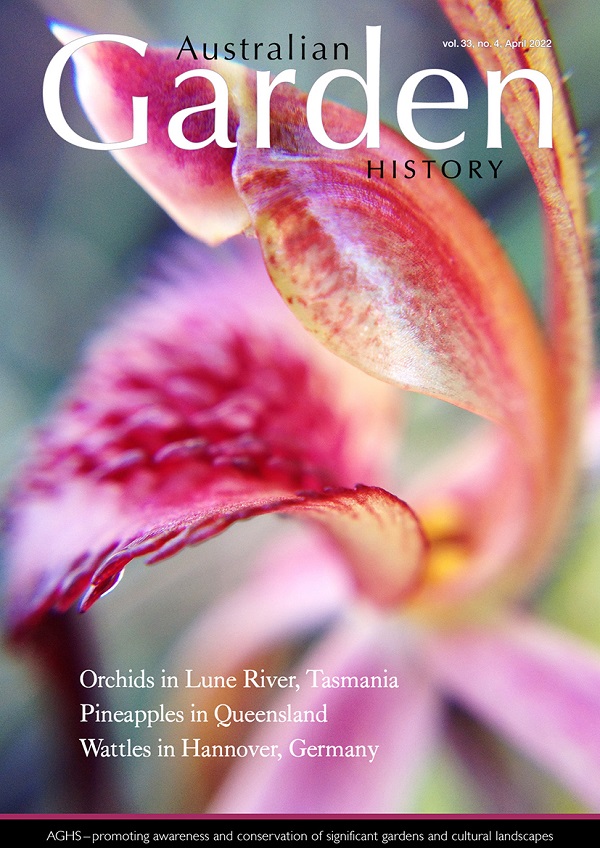
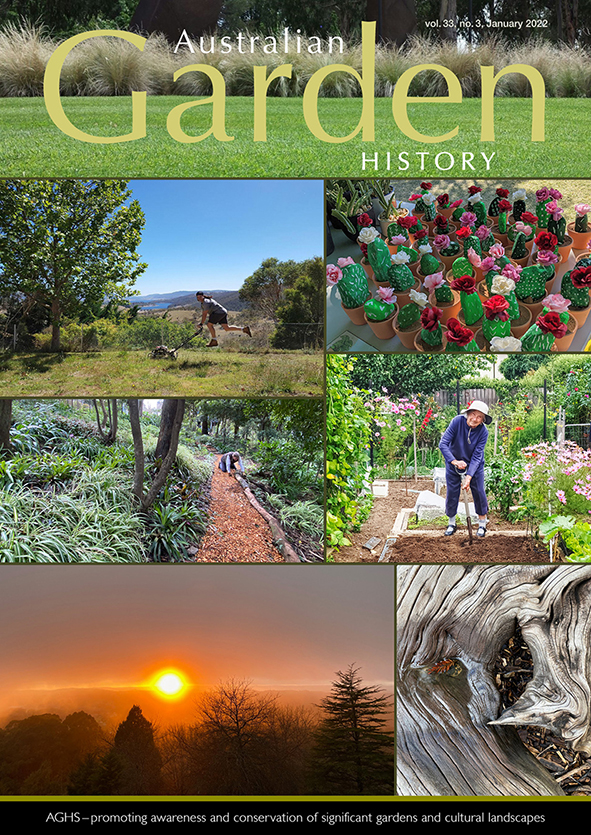
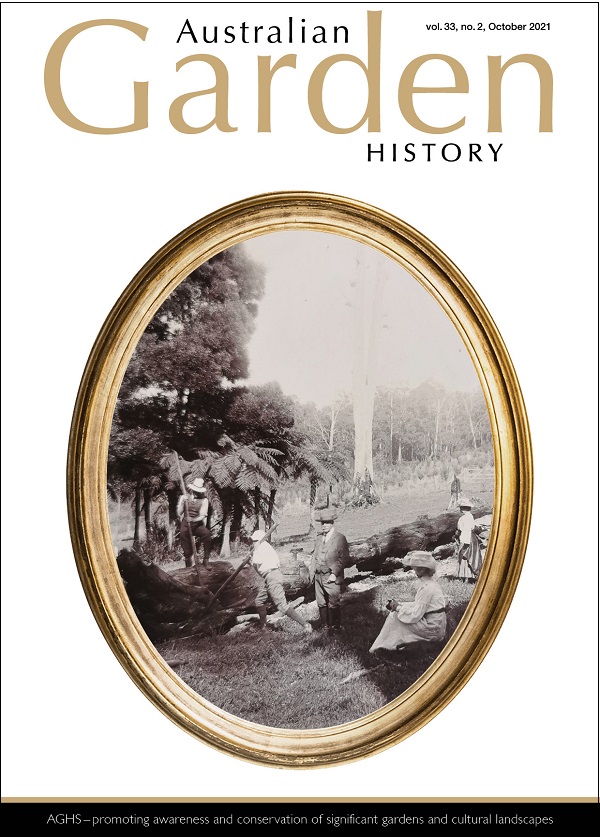
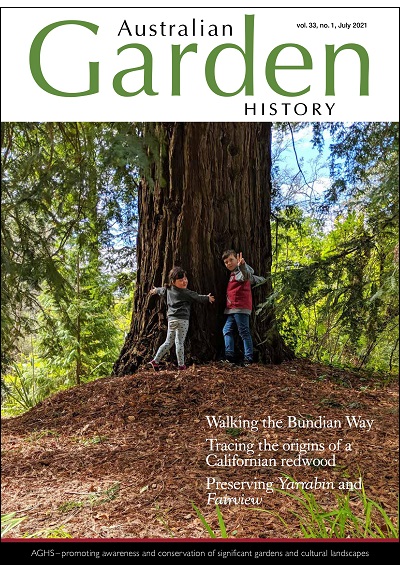
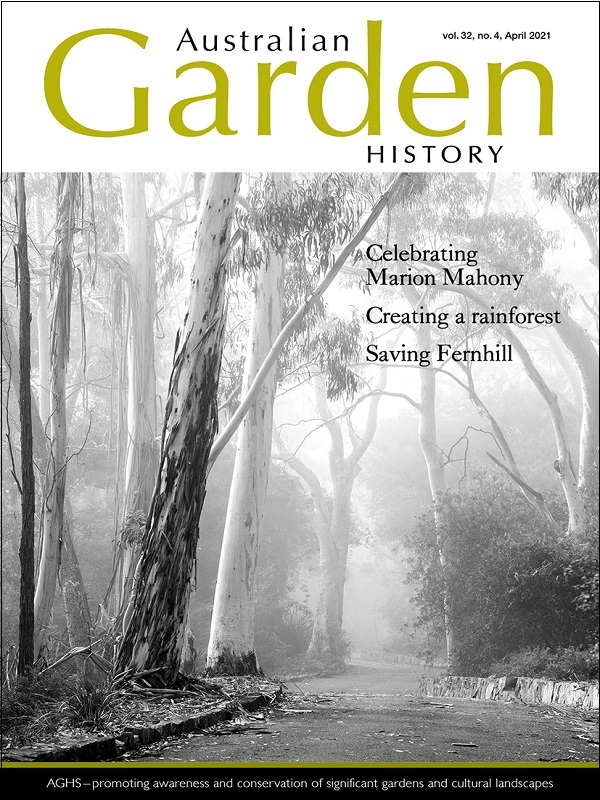
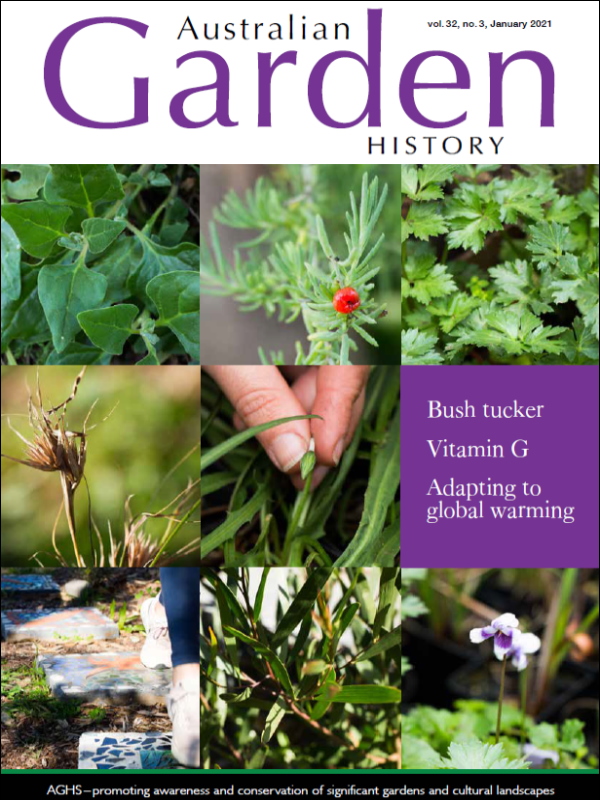
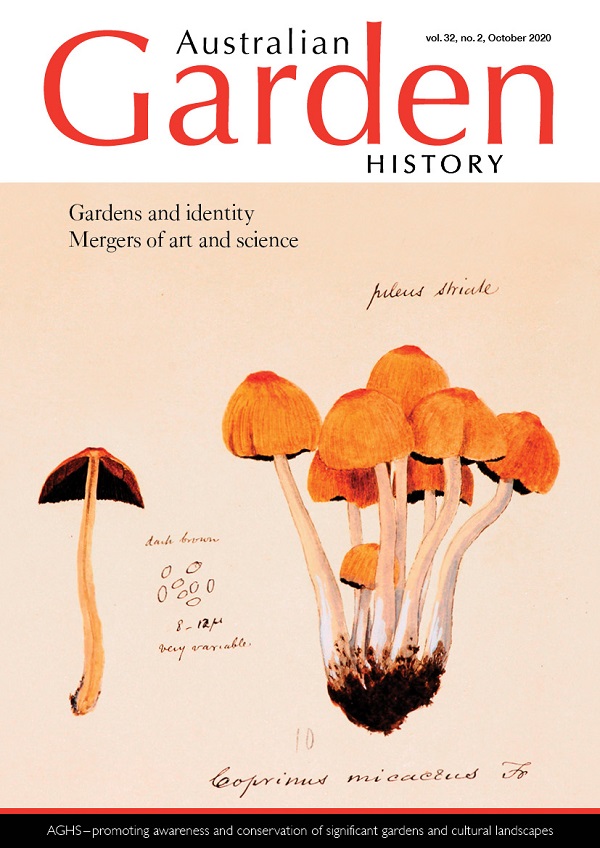
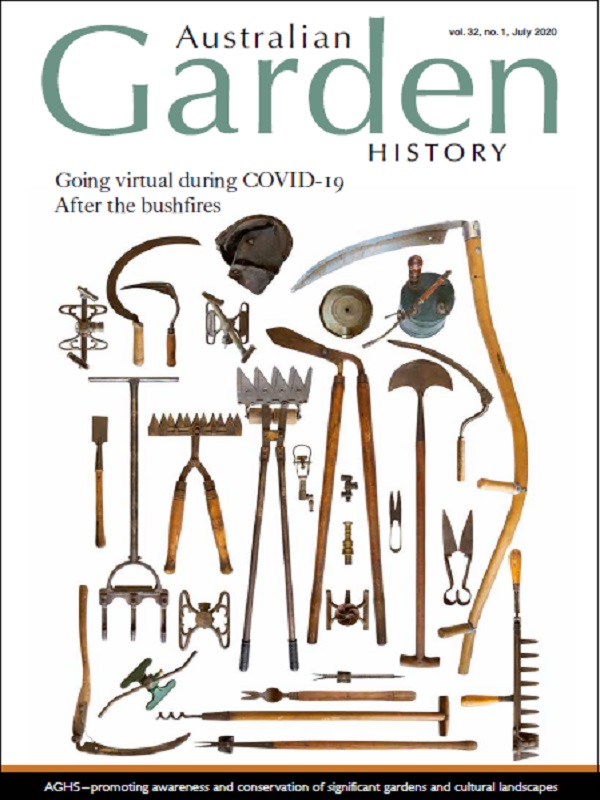

This Season
AGH Vol. 36 No. 3 January 2025
Contents
Editorial Francesca Beddie
Growing against the grain: The Chinese tradition of market gardening in Sydney Christopher Cheng
Flicking through old photos and newspaper reports about Chinese market gardeners, one wonders how they not only survived but thrived in Australia. The country is notorious for its extreme climate and history of systemic racism yet, despite these challenges, Chinese gardeners excelled. Their produce was reliable, and their crops grew quickly, even during dry spells. By properly listening to the experiences of Australia’s diverse agricultural communities, we can gain a better appreciation of the valuable contributions they made to the country’s multicultural heritage.
Vietnamese refugee gardens: Elusive traces of Australia’s multicultural history Helen Armstrong
The gardens migrants make reveal how memories and dreams take form in a new country. There are complex reasons why people leave their home country, ranging from traditions of migratory work to chaotic displacement associated with war. The Vietnamese refugees who fled after the fall of Saigon in 1975, built gardens for various reasons. Seeing themselves in exile, former soldiers turned to gardening as a distraction, while waiting to get back home. Others created gardens as a gesture of thanks to Australia for welcoming them. A third group tried to recreate the ways of life of the homeland and build gardens of harmony.
Exporting Japanese plants: The Yokohama Nursery Catalogues Trevor Nottle
When Commodore Matthew Perry steamed his gunship Susquehanna upriver from Nagasaki towards the capital, Edo (now Tokyo), in 1854, he forced open the gates of isolationist Japan. The shogun, Tokugawa Ieyasu, was virtually compelled to sign the Convention of Kanagawa, which allowed trade between that secluded nation and the emerging power, the United States of America. The trade came to include a splendid array of plants, displayed in sumptuous catalogues created by the Yokohama Nursery Company.
Artist statement: Cape sundew (Drosera capensis) Iliana Oakes
I am a science illustrator and animator with a doctorate in Natural History Illustration from Newcastle University. My passion for science and learning drives my practice, where I translate complex concepts – ranging from biochemistry and quantum mechanics to horticulture – into compelling visual narratives.
Aboriginal land management: What the Dawsons of colonial Victoria saw Raymond Madden
Gardening, like farming, is a complex term when applied to Aboriginal land care practices. It can be loaded with colonial assumptions about land use. So, what is ‘gardening’? In the case of Aboriginal land management in Western Victora, it was, and continues to be, about sustainability and ‘caring for country’. The area has fertile soil (volcanic loam), which makes it a vital resource for Aboriginal people who were, and continue to be, so dependent on the local productivity of the land. It is wonderful gardening soil. Unfortunately, this also made it very attractive to colonial settlers and farmers, who, typically, violently took the land from local Aboriginal groups. Few had respect for their attachment to the land or abhorred their eviction from that land. James Dawson was an exception.
Periwinkle, Vinca spp: A plant that enjoys the air it breathes John Dwyer
Poets have long celebrated periwinkle. Periwinkles were an early introduction to Victoria. Vinca angustifolia Roth was included in Mueller’s Systematic Index to the Plants of Victoria annexed to his First General Report (1853).
Video games as a portal to gardening and more: From a cosy game to studying landscape architecture Kylie Jones
I started playing Animal Crossing: New Horizons, a Japanese video game developed for the Nintendo Switch. Players decorate an island with fruit trees, veggie gardens, flowers, pathways and thousands of other inanimate items, while also modifying waterways and creating cliffs and valleys. The game’s cute, bright graphics and non-demanding gameplay made it an ideal escape for me and some 44 million other people who were spending most of their time at home under lockdown rules. I started studying landscape architecture, a choice that was heavily influenced by Animal Crossing, which I now see as my baby steps into a landscape architecture adventure. Landscape architecture and the potential to be creative were the perfect choice for me.
Vale Richard Nolan Janet Bolton and Stuart Read
Long-time AGHS member Richard Nolan has died. He was a generous contributor to the Society, serving on both its South Australian Branch (1993–1999; 2009–2013) and National Management Committee (2009–2014). Richard trained in horticulture and had a wide knowledge of plants, including rare species. In 1994 he won a Churchill Fellowship to study at the Jerusalem and University Botanic Gardens comparing the cultivation of indigenous flora in Israel, Spain and South Africa.
For the bookshelf:
Jason Roberts, Every Living Thing – The Great and Deadly Race to Know All Life
In Every Living Thing, Jason Roberts has presented the lives of Linnaeus and de Buffon as part of a cavalcade of heroes and stories from the 18th century to the present – from a time when even the word ‘science’ had a different meaning and the vocabulary of taxonomy had yet to be invented, to the present day when classification can be based on DNA mapping.
Christina Castel-Branco (editor), Garden Transmissions – Word, Image, Experience, Future
This fascinating book emerged from a conference, Garden Transmissions, held in Lisbon in 2021 and organised by the Institut Europeen des Jardins et Paysages. Three introductory essays provide explanation of the conference theme.
44th Annual Conference – Hesperia: Looking West Francesca Beddie
As we learned from John Viska, the indefatigable convenor of the 2024 conference in Bunbury WA, we can thank voyagers travelling via the Cape of Good Hope to the Swan River colony (Perth region) for a range of familiar plants and garden escapes.
Profile: Brian Thomas
My passion for gardening began early. As a child, my mother gave me gardening chores and these soon evolved into a sense of ownership and pride in the family garden. This formative experience ignited a lifelong love of horticulture. Now, my skill and creativity in garden design has led to others seeking my expertise.
Remarkable gardens: Rivendell Anna Howe
How Rivendell came to Kambah – A CONVERSATION WITH MARY VIRR
Rivendell came to the new Canberra suburb of Kambah in the Tuggeranong Valley in a house designed by Laurie Virr for his family in 1975. When his widow Mary and I met in mid-2024, she told me: ‘It was Laurie’s wish to live in a city designed by Walter Burley Griffin that brought us to Canberra and the property’s name was inspired by Tolkien’s Lord of the Rings’.
Good news: Making the most of winter Anne Claoue-Long
Canberra is terribly cold in winter. People tend to huddle at home with the heating on and garden visits are definitely off the agenda. Rather than have a blank spot in the AGHS ACT Monaro Riverina events program, the Branch committee devised a solution – an out-of-town gathering in a warm indoor location with country catering and garden viewing through movie showings.
The Society @ work Prue Slatyer
At the 2024 Annual General Meeting (AGM) several members of the National Management Committee (NMC) stepped down after completing their terms or due to health issues. Warm thanks go to Lynne Walker, Lyn Barrett, Anne Claoue-Long, Annabel Murray and Patricia Michel for their hard work and valuable contributions to NMC.
AGHS national oral history collection: Simon Brandon Sue Whitehouse and Lyn Barrett
In February 2020, Sue Whitehouse and Lyn Barrett, AGHS Southern Highlands Branch, interviewed Simon Brandon, a former Head Gardener at Hopewood House. Hopewood House in Bowral, Southern Highlands of NSW, was built in 1884 for pastoralist Ben Osborne and his wife Lucy Throsby.

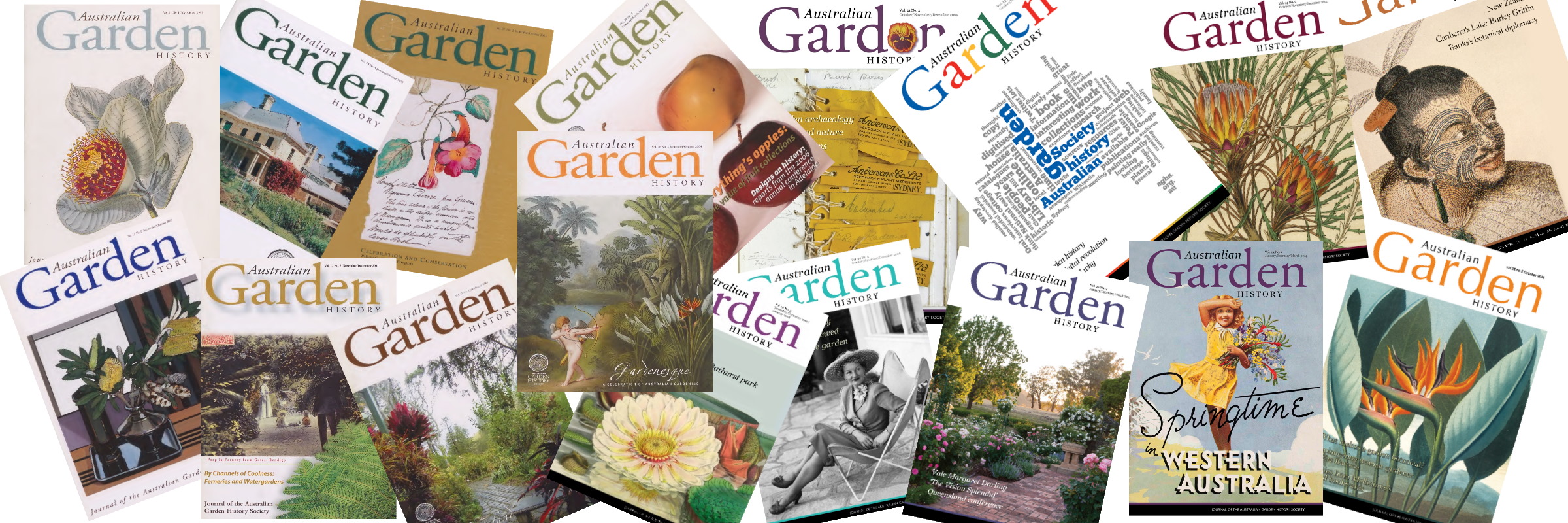
Leave a Reply
You must be logged in as a member to post a comment.